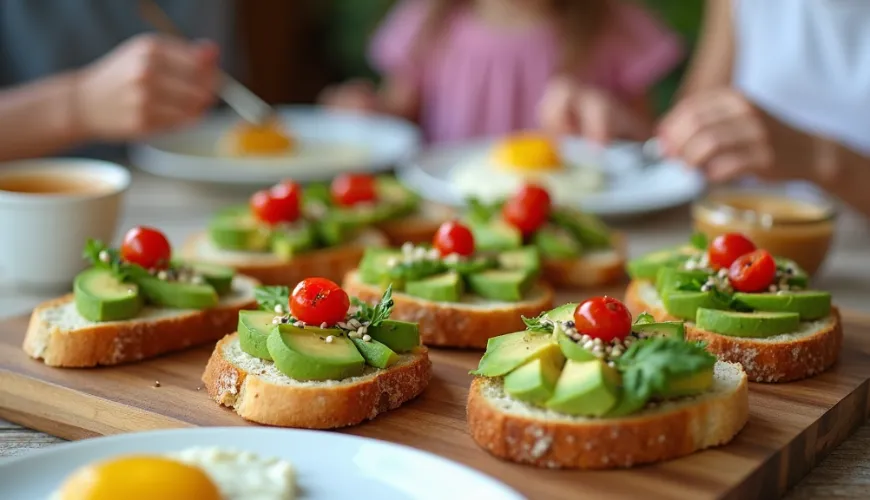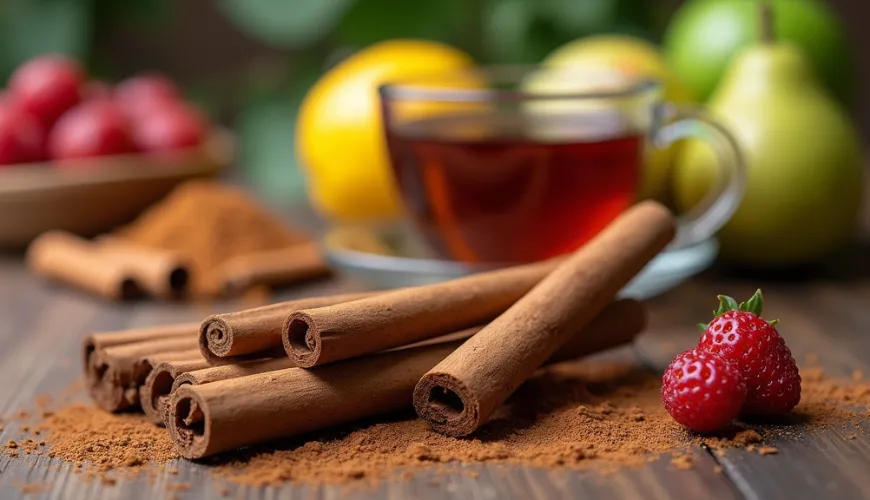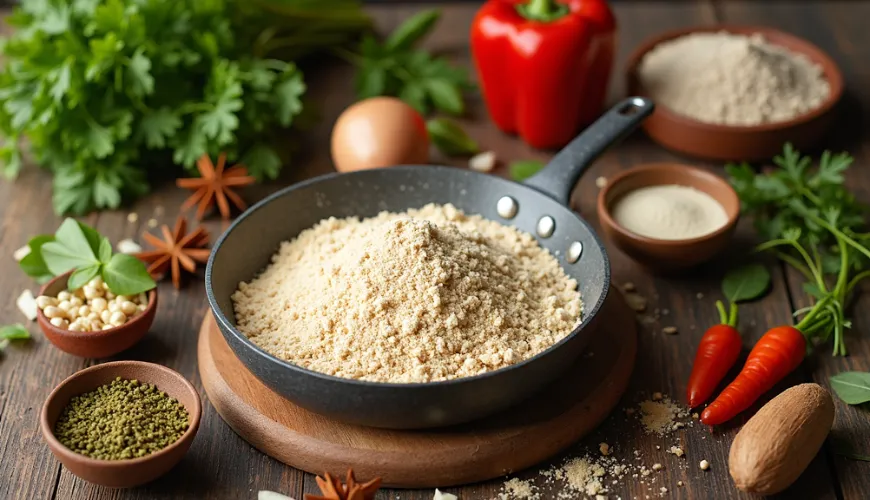
Discover a homemade keto bread recipe you'll love

Bread Without Regrets - Why Keto Bread is the Perfect Choice Even Outside of a Diet
We've come to see bread as a staple. In the morning with butter, at noon as a side to soup, in the evening perhaps just with a spread. In Czech cuisine, bread is an inseparable part of the menu, but what if you're trying to cut back on carbs, lose weight, or simply eat healthier? For many, the first sacrifice is bread. Fortunately, there is an alternative that does not disappoint in taste and at the same time adheres to the principles of low-carb eating – keto bread.
Keto or low-carb bread is specially designed to contain minimal carbohydrates while retaining the filling ability and taste we expect from bread. Interest in this type of bread has grown in recent years not only among those on the ketogenic diet, but also among those who want to eat more consciously and healthily.
What Does "Keto Bread" Actually Mean?
Traditional bread is largely made from wheat flour, which contains a significant amount of carbohydrates – especially starch. However, these play a minimal role in a keto diet. The goal is to get the body into a state of ketosis, where it uses fats instead of sugars as fuel. To make this possible, carbohydrate intake needs to be minimized – usually to 20-50 grams per day.
Keto bread therefore does not contain ordinary flour. Instead, it is based on ingredients like almond flour, coconut flour, psyllium, eggs, seeds, or flaxseed flour. The result is bread that is rich in proteins, fiber, and healthy fats, but almost sugar-free. Surprisingly, it can be tastier than you might expect.
Homemade Keto Bread
Making homemade keto bread is not as difficult as it might seem. Unlike traditional baking, where you need to pay attention to rising and precise ratios of flour and water, keto baking is much more forgiving. It doesn't contain gluten or yeast.
Here is a favorite recipe for homemade keto bread that is suitable both for breakfast bread and as a toast base or sandwich bread.
Recipe for Moist Keto Bread
Ingredients:
- 100 g ground almonds (almond flour)
- 30 g psyllium
- 2 teaspoons phosphate-free baking powder
- a pinch of salt
- 3 eggs
- 250 ml hot water
- 1 tablespoon apple cider vinegar
- 2 tablespoons olive oil
First, preheat your oven to 180 °C – this is essential, you won't get anywhere without it. In the meantime, prepare two bowls. In one, pour the dry ingredients: almond flour, psyllium, baking powder, and a pinch of salt – mix everything together so it combines nicely. In the other bowl, beat the eggs, add a bit of vinegar and olive oil, and when you're ready, pour the liquid mixture into the dry and mix.
Now comes the hot water – add it to the dough, mix well, and prepare for it to start thickening quite quickly. Once the dough has the right consistency, you can start shaping it – either make a classic loaf out of it or press it into a bread mold, depending on the shape you prefer. Put the whole thing in the oven and let it bake for about 50 to 60 minutes. The goal is for the surface to beautifully golden and for the dough to be firm to the touch. Let the finished bread cool completely before cutting into it – otherwise, the inside may become moist or crumble, and who would want to ruin such a homemade treat?
The advantage of this recipe is that it doesn't use any exotic ingredients. Both almond flour and psyllium are now commonly available in health food stores or online shops like Ferwer, which specializes in products that are gentle on the body and the environment.
Why Give Keto Bread a Chance Even Without a Diet?
You might be wondering – why should I replace my favorite rye or sourdough bread with a flourless alternative? The answer lies not only in nutritional values but also in how one feels after such a meal.
Traditional bread is nutritionally rich but often causes sharp fluctuations in blood sugar levels. After breakfast with white bread, you'll feel hungry again in two hours. Keto bread, with its high fiber and fat content, satisfies for a longer time, without the unwanted "hungry" effect. If you're trying to watch your calorie intake or just don't want to feel tired after lunch, keto bread is a great choice.
Moreover, due to the absence of gluten, it is also suitable for people with gluten intolerance or celiac disease, making it one of the most versatile alternatives to regular bread on the market.
And what about the taste? Contrary to expectations, keto bread is not "rubbery" or tasteless. On the contrary. Thanks to the presence of almond flour, it has a slightly sweet, nutty taste and a firm structure. If you add sun-dried tomatoes, olives, caraway seeds, or rosemary to the dough, you'll get an excellent gourmet experience.
When Bread Started Tasting Good to Kids
In one family with small children, there was an attempt to replace regular bread with a healthier alternative. A mother trying the ketogenic way of eating baked homemade keto bread using a simple recipe. She expected the kids to turn up their noses, but the opposite was true – the bread tasted so good that they started spreading it themselves for breakfast with butter and cheese. Interestingly, even the husband, used to "proper bread," enjoyed it and didn't notice the difference. This example shows that healthy alternatives don't have to be a compromise but can instead be a welcome refreshment to the whole family's menu.
What to Watch for When Buying or Baking?
When selecting ingredients or buying ready-made keto bread in the store, you should be attentive. Not all products labeled "low carb" or "keto-friendly" truly meet the required nutritional parameters. Some may contain hidden starches, sugars, or chemical additives that don't belong in a healthy diet.
The key is to read labels, ideally go for proven brands, or bake the bread at home where you have control over every ingredient. Online shops like Ferwer also offer ecologically packaged ingredients and products with an emphasis on sustainable origin, which is another reason to choose quality over quantity.
How to Enrich Keto Bread?
Keto bread is nutritious on its own, but you can easily customize it according to your current taste or needs. It pairs well with:
- sesame or hemp seeds for topping
- pumpkin seeds to increase zinc content
- hazelnuts or walnuts for crunchiness
- dried onion or garlic for a more pronounced aroma
And if you're looking for a sweet version, you can mix a bit of cinnamon and erythritol into the dough – you'll have a quick base for keto gingerbread.
As one of the advocates of the ketogenic diet, nutrition expert Maria Emmerich said: "You don't have to give up bread to be healthy. You just have to choose the right one."
Keto bread is more than just a "low-carb" alternative. It is proof that even without flour, sugar, and unnecessary additives, you can create a food that is delicious, nutritious, and naturally fits into a healthy lifestyle. Whether you're on a keto diet or simply looking for a way to eat more consciously – homemade keto bread is the perfect choice that you'll fall in love with.

